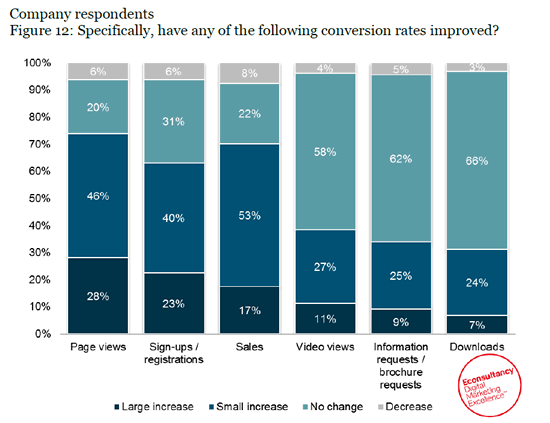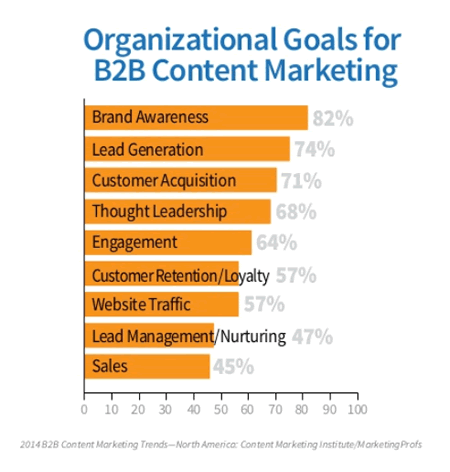 For many companies, driving traffic to their websites from an acquisition perspective is still a primary goal. It’s the way most organizations measure the effectiveness of their campaigns and digital marketing efforts beyond the campaign perspective. The famous top of the funnel.
For many companies, driving traffic to their websites from an acquisition perspective is still a primary goal. It’s the way most organizations measure the effectiveness of their campaigns and digital marketing efforts beyond the campaign perspective. The famous top of the funnel.
There’s nothing wrong with driving traffic nor with acquisition of course, as long as we understand that in a web context traffic is not the holy grail and certainly not the goal nor even a KPI of interactive marketing. All kinds of marketing can be used for all business goals, depending on context, and sheer visitor numbers really don’t mean anything by themselves.
For transactional sites in retail and financial services, for instance, the conversion points are obvious and there is much more focus on conversion optimization and the overall digital customer experience across all stages of the funnel, journey and life cycle. But many, many businesses don’t fall into this category and they’re not looking enough at conversion optimization and the other layers of the proverbial funnel. They just look at one piece of the overall digital customer experience and journey.
The excessive focus on traffic in most cases leads to a fixation on numbers and data that have little meaning. In social media marketing, we know about the addiction to the number of Twitter followers or Facebook fans. In email marketing, people often remain solely focused on list size, open ratios or clicks. And many online marketers still measure the success of their actions by nothing more than the number of visitors and page views. I know it seems prehistoric, but believe me, you actually see it done every day. It has a lot to do with the siloed mindset, short-term thinking and this lack of a connected marketing view whereby the customer life cycle is forgotten.
Four crucial questions about online traffic
Traffic is good. It’s even crucial. Without visitors to your website, it serves no business or customer purpose. That much is self-evident.
However, so many companies invest tons for measures to generate traffic, that they lose sight of the essentials:
- What percentage of my visitors is relevant for my business? Who do I want to reach to start with? And how will I do that?
- How valuable are my website and online communications for the people I’m trying to reach or attract? Does the content on my website match their intent? How can I do better?
- What integrated marketing mix is best for creating the most cost-efficient traffic? Am I allocating my digital marketing budget from a tactics and short-term perspective or am I looking at the customer objectives and all my business objectives ?
- And most importantly: what do we do with visitors once they’ve landed on our website, blog, etc.? How do we optimize the overall customer experience and journey? How do we match intent and goals to drive results further? And that is what conversion optimization, as part of the increasingly important ubiquitous optimization mindset, is really about.
Conversion optimization is a mentality
Companies are massively investing in online advertising, campaigns, search engine advertising, social media activities, content and email marketing with a focus on traffic generation. Each way of generating traffic carries its own price tag in terms of direct costs. However, even supposedly cheaper forms of interactive marketing such as search engine optimization and email marketing cost loads of money if they don’t bring results.
And ultimately, there is one important parameter for seeing and improving results: conversion. Everyone knows it, but businesses do not turn that knowledge into action by building a systematic conversion optimization process and nurturing processes in a connected marketing automation flow approach whereby content is the social object that drives interaction, engagement and empowerment.
Although there have been clear evolutions in the ways businesses look at conversion optimization and the overall journey the last few years, and the end goals are taken more into account, parameters such as the number of page views are still seen as conversion indicators. This is clearly shown, for instance, by Econsultancy’s Conversion Rate Optimization Report 2013 (also see below). While that’s understandable if you look from the individual channel perspective (e.g. as a result from an email marketing campaign) it is not how we want to look at conversion from an overall perspective.

It is obvious that optimization of conversion is still being treated as something superfluous by many businesses, when in fact, it’s a veritable Cinderella. The daily and incremental improvement of all cross-channel marketing activities, landing pages, etc. is a question of processes and most importantly of mentality.
By excessively focusing on traffic and the short-term, people all too often forget this. We see exactly the same thing happening in content marketing where the top of the funnel de facto gets most attention whereby the more essential content is still overlooked.
In B2B content marketing, for instance, 57% of respondents in the B2B Content Marketing 2014 Benchmarks, Budgets & Trends – North America by Content Marketing Institute and MarketingProfs, cite website traffic as the main organizational goal of content marketing. Brand awareness tops the list with 82%, lead gen follows with 74% and acquisition ranks third with 71%. When going through the other goals (and in B2C this is even more the case), it’s clear that most focus is on the top of the funnel.

Incremental growth by continuous optimization
In 2010, ZenithOptimedia said that of all the money that would be spent on traffic generation, only 2 to 3% would lead to effective conversion. That number has grown. But not that much. So, imagine what it would mean for your business if it grew by just one percent month after month. The incremental impact on the bottom line after a relatively short period of time would be huge. It is therefore, time that more thought and resources be put into increasing results through continuous analytics and conversion improvement. And there is no business that cannot improve its conversion score because it’s a comprehensive and omnichannel never ending exercise encompassing content, media mix, landing pages, calls-to-action, etc.
Measure and improve each element, always a little more: use all conversion techniques, from A/B tests and usability improvements to content optimization/customization and the interaction channels people decide to use. This is much more important and profitable than forever chasing after more traffic. Again: it may be obvious, but it’s definitely not being done enough. Want proof? According to some data Bryan Eisenberg showed me a while ago, for every 95USD businesses spend on generating traffic, they only spend…one on conversion optimization. Even if that number might have changed as well, it’s still far too much about traffic and, in the end, not looking at the individual journey enough.
Knowing that we live in an online world where online penetration is high and people have an abundant choice regarding information and communication, that is far too low. In the end, optimizing conversion is a matter of customer-centricity. People will only take action if something is perceived valuable by them.
Not working on conversion and continuous optimization means not improving the customer experience.
Originally posted on SmartInsights.com (updated with new data).

